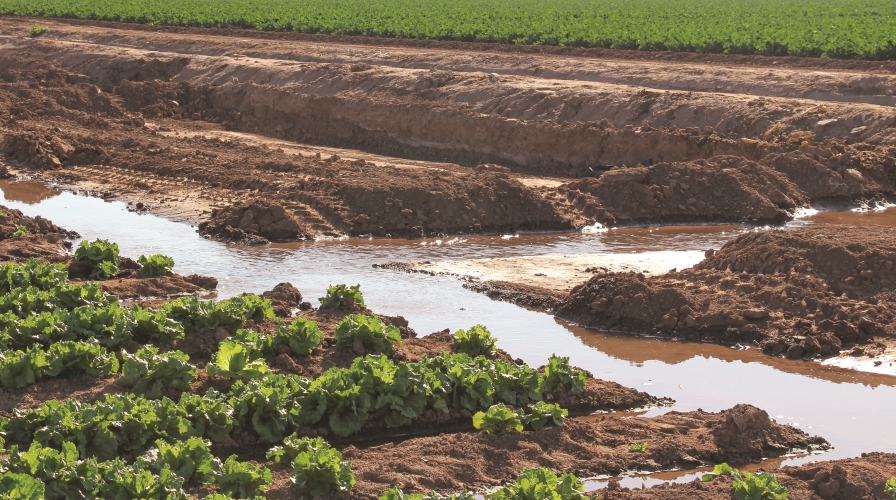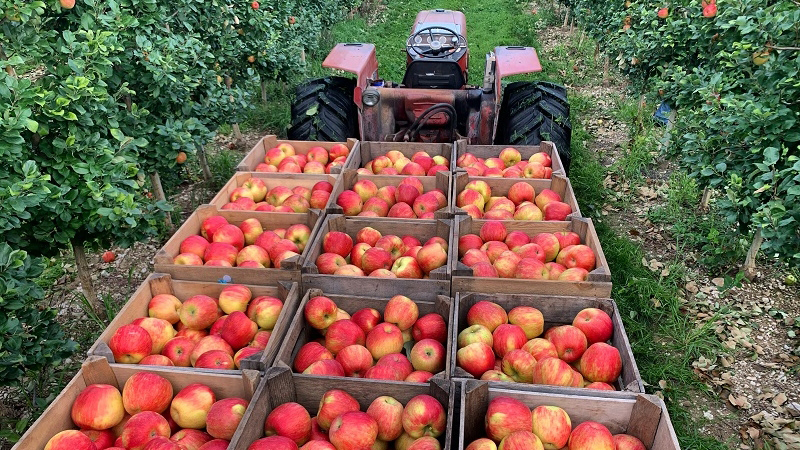Tips for Growers to Reduce How Much Pesticide Enters the Environment

Stay on top of repairs reduces how much water you use and limits runoff. It also decreases the likelihood of developing diseases.
Growers face many challenges in running a vegetable operation, from managing labor to dealing with changing weather conditions.
They also must consistently produce high-yielding crops that meet buyers’ strict conditions and quality standards. The presence of insects, as well as damage caused by these pests, can render a crop unmarketable. Lettuce, for example, may not be harvested if aphids are inside the heads at maturity. You can sell a celery crop if leaf miners bore tunnels in the petioles.
Customers have a low threshold for insect damage. So most growers rely on pesticides to bring crops up to market standards. Considering the critical role that pesticides play in growing vegetables, it is vital that they remain available to farmers.
However, environmental concerns threaten the future availability of some insecticides. Several classes of pesticides, including organophosphates, pyrethroids, and neonicotinoids, are toxic to some important aquatic invertebrate species, which threatens the ecological health of creeks, estuaries, lakes, and rivers. As a result, some states like California passed strict water regulations.
What can growers do to protect both their crop and their local ecosystem?
Fewer Pesticides Will Be Available
Regulatory agencies are increasing pressure on growers to demonstrate that their use of pesticides is not degrading water quality in nearby water bodies.
Growers who apply organophosphate pesticides in California’s coastal valleys can face more regulatory oversight with burdensome monitoring and reporting requirements that add significantly to production costs. There are also concerns in the agricultural community that neonicotinoid pesticides will soon come under stricter regulation in California.
Countries such as France and Germany have banned the use of neonicotinoid insecticides in flowering crops due to detrimental effects of these pesticides on bee populations.
Over the next few years, the agricultural industry will need to make substantial progress in lessening offsite impacts of pesticides. If it doesn’t, it potentially risks losing access to several key insecticides.
To accomplish this goal, an integrated strategy that uses a combination of source control and mitigation practices will be needed. This article addresses source control. A previous article focusing on mitigating runoff ran in the December 2018 issue of American Vegetable Grower.
Source Control
Source control minimizes the pesticide load leaving a farm. And mitigation practices treat and remove pesticides in runoff and drainage that flows off site. The more successfully you reduce pesticide load (source) in runoff, the less you’ll invest in mitigation practices.
IPM Benefits Water Quality
IPM can be a key source control strategy. It can be the best way to maximize insecticide efficacy and protect the environment from off-site effects of pesticides.
Time sprays to only when a pest is most susceptible to an insecticide. Also, rotate applications among pesticides with different active ingredients reduces the chance of a species developing chemical resistance to a specific pesticide.
Implementing IPM practices gets the most out of insect control and protects the environment because you’re relying on fewer insecticide sprays. By lessening the amount of pesticide applied to crops, you’re reducing risks to water quality.
Pesticide Application
Other measures of source control include increasing the application efficiency of sprayers through calibration and optimizing nozzles and spray patterns.
New ways of applying pesticides, such as through seed coatings, drip irrigation, or using precision spray technology, may also help growers control insect pests while using less pesticides.
In addition, avoiding sprays on non-target areas adjacent to fields, such as buffers, roadways, and riparian zones, can reduce the chances of pesticides washing off site into nearby water bodies.
Irrigation Management
Improving irrigation management can also be an effective strategy for reducing pesticide loads.
Many pesticides are soluble in water and easily move with runoff. Other types of pesticides adhere strongly to soil particles but can be transported in runoff that carries high sediment loads. By reducing or eliminating runoff during irrigation events, the load, or amount of pesticides escaping off site will fall significantly.
One way growers can lessen runoff is by improving the distribution or application uniformity of an irrigation system. Improving the application uniformity of a sprinkler system reduces the time that a crop must be irrigated, thereby reducing the volume of excess water that might be applied and result in runoff.
Keeping up with maintenance, such as fixing leaks and broken sprinkler heads, also can limit runoff.
Finally, scheduling irrigations to match crop water needs can greatly eliminate runoff. By irrigating the right amount of time to replace the moisture that a crop used, the soil is less prone to becoming saturated to the point when the applied water runs off a field.
By implementing a combination of source control measures most farms can greatly reduce the impacts of pesticides on the surrounding environment. Using an integrated approach of IPM, precision spray applications, and better irrigation management, the load of pesticides discharged from a farm can be greatly curtailed. In situations where tail water cannot be eliminated, mitigation practices that treat the water will be needed to eliminate toxicity.










